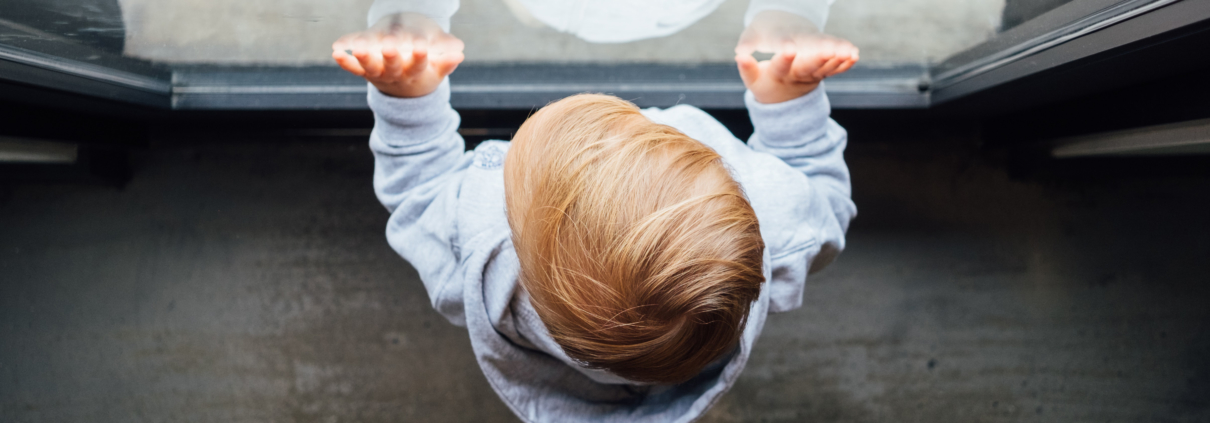Coronavirus & Working from Home: Part 2 – Childcare
Working from Home & Childcare
Hand Signals, Help, and Being Free Solo
We’ve all seen it – the professor masterfully navigating an interview while his children waltz into his office making an unwelcome guest appearance on a live international news program. I’ve watched it a million times and may watch it a million more – It. Never. Gets. Old. It’s comedy gold, but for anyone who has ever worked from home with kids, it’s a very real concern.
COVID-19 has been a tragedy, and the most important thing is for people to stay healthy. Figuring out childcare obviously pales in comparison to tending to sick loved ones, but many employees are struggling to figure out how to work from home while their kids’ school and extracurricular events have been curtailed or cancelled. To all of you I say, “Welcome to my work life for the last seven years!” As mom to three rowdy boys – ages 10, 8, and 3 – I’ve got some tips to help navigate this uncharted territory (even if you won’t be conducting any live international television interviews any time soon).
Hand Signals
I’ve heard all sorts of awkward noises on group conference calls. There was the time when someone forgot to mute themselves before shouting, “KATIE, STOP THAT RIGHT NOW!” And there’s also that telltale distracted pause in a person’s voice where you can virtually hear them actively shooing someone away. Let’s try avoid that, eh? Insert HAND SIGNALS!
My kids have grown up with me working from home – they know it no other way. Over time we’ve developed some key communication protocols. My office door is not locked – the kids can come in and out as they please – but they know to use hand signals when they walk in. Here’s the protocol: They walk in and silently move their hand in a way that indicates talking (like the motion you’d make if you had your hand in a puppet and you were making it talk). If I am already on mute and it is fine for them to go ahead and speak, I simply tell them to go ahead. Otherwise, I put up my finger to signal that they should hold on for just a second, mute myself, and then tell them to go ahead. This has saved me from countless instances of embarrassment. And the kids actually kind of like it; it’s like our secret code.
In-Home Childcare
While hand signals have been great with my older children, my 3-year-old hasn’t quite mastered the program. I can get some work done with him around, but an important conference call is difficult. Conference calls aside, efficiency is greatly hampered when your workspace is shared with a toddler (#shocker).
For times when the children are routinely home, such as over the summer, I have coordinated for a caregiver to be there to keep the children at bay. If you have access to such help during these social-distancing times, I recommend it.
But the key to success will be clear communication between you, the caregiver, and the children. Make sure the caregiver and the children know the extent to which you are, or are not, available – if you are just quietly working, maybe you’re ok with kids coming and going. Maybe you’re doing a live TV interview for the BBC and your space should be strictly off limits. Whatever it is, clearly communicate the rules.
Another key to success is to make it clear who is in charge and when. Dear child, if you need a bowl of cereal, need to tattle on your brother for ruining your epic Lego creation, or want to ride your bike to Sam’s house, GO SEE THE NANNY! If you require an immediate trip to the ER or the house in on fire, then come and get me (with hand signals, of course!). The point is that kids need to know when the caregiver has the reins. And the caregiver needs to feel empowered and in charge. It can be awkward for a caregiver to determine what authority she has when you are also in the home. My typical last words before heading into my office are “Ask Maggie, she is in charge,” and I make sure everybody hears me.
Free Solo
For a multitude of reasons – cost, quarantines, etc. – you may not have access to the glory that is in-home childcare. How can you best cope? A teacher friend wisely recommended maintaining structure. Ask your kids to help set a schedule for the day and then stick to it. And, consider altering your work hours when possible – maybe this is the time to start waking up at 5 a.m. to be productive while your house is still quiet. It might allow you to schedule some playtime into your day with your kids.
If all else fails, and I’m just being honest here, we all know that screens will help keep them out of our hair. But, the quality of the screen content matters. Lots of online learning portals are offering free access here, here, and here. Personally I am intrigued by these virtual museum tours and this art studio offering live daily art tutorials. Finally, a Mom’s group has compiled a Google doc here.
Grace
At the end of all this, I would like to think we will all give each other the grace and understanding the situation warrants. I have a feeling people are going to be pretty forgiving overall. Take it from the professor.
[About this Series: Since its inception in 2006, Alliances Management (www.am.consulting) has operated as a 100% virtual, distributed workforce; today its staff members work in a dozen U.S. states, Europe, and the Philippines. In light of employers reconsidering face-to-face work because of the proliferation of the novel coronavirus (COVID-19), we decided to write a multi-part series to share some of our thoughts and best practices about remote work. Read the entire series here.]












This is a great post! Thank you!
Thanks, Sheila: Julie sure did do a good job of (professionally) offering a bit of humor in an overall difficult situation.